Patches of different types for carotid patch angioplasty
- PMID: 33598915
- PMCID: PMC8094514
- DOI: 10.1002/14651858.CD000071.pub4
Patches of different types for carotid patch angioplasty
Abstract
Background: Extracranial carotid artery stenosis is the major cause of stroke, which can lead to disability and mortality. Carotid endarterectomy (CEA) with carotid patch angioplasty is the most popular technique for reducing the risk of stroke. Patch material may be made from an autologous vein, bovine pericardium, or synthetic material including polytetrafluoroethylene (PTFE), Dacron, polyurethane, and polyester. This is an update of a review that was first published in 1996 and was last updated in 2010.
Objectives: To assess the safety and efficacy of different types of patch materials used in carotid patch angioplasty. The primary hypothesis was that a synthetic material was associated with lower risk of patch rupture versus venous patches, but that venous patches were associated with lower risk of perioperative stroke and early or late infection, or both.
Search methods: We searched the Cochrane Stroke Group trials register (last searched 25 May 2020); the Cochrane Central Register of Controlled Trials (CENTRAL; 2020, Issue 4), in the Cochrane Library; MEDLINE (1966 to 25 May 2020); Embase (1980 to 25 May 2020); the Index to Scientific and Technical Proceedings (1980 to 2019); the Web of Science Core Collection; ClinicalTrials.gov; and the World Health Organization (WHO) International Clinical Trials Registry Platform (ICTRP) portal. We handsearched relevant journals and conference proceedings, checked reference lists, and contacted experts in the field.
Selection criteria: Randomised and quasi-randomised trials (RCTs) comparing one type of carotid patch with another for CEA.
Data collection and analysis: Two review authors independently assessed eligibility, risk of bias, and trial quality; extracted data; and determined the quality of evidence using the GRADE approach. Outcomes, for example, perioperative ipsilateral stroke and long-term ipsilateral stroke (at least one year), were collected and analysed.
Main results: We included 14 trials involving a total of 2278 CEAs with patch closure operations: seven trials compared vein closure with PTFE closure, five compared Dacron grafts with other synthetic materials, and two compared bovine pericardium with other synthetic materials. In most trials, a patient could be randomised twice and could have each carotid artery randomised to different treatment groups. Synthetic patch compared with vein patch angioplasty Vein patch may have little to no difference in effect on perioperative ipsilateral stroke between synthetic versus vein materials, but the evidence is very uncertain (odds ratio (OR) 2.05, 95% confidence interval (CI) 0.66 to 6.38; 5 studies, 797 participants; very low-quality evidence). Vein patch may have little to no difference in effect on long-term ipsilateral stroke between synthetic versus vein materials, but the evidence is very uncertain (OR 1.45, 95% CI 0.69 to 3.07; P = 0.33; 4 studies, 776 participants; very low-quality evidence). Vein patch may increase pseudoaneurysm formation when compared with synthetic patch, but the evidence is very uncertain (OR 0.09, 95% CI 0.02 to 0.49; 4 studies, 776 participants; very low-quality evidence). However, the numbers involved were small. Dacron patch compared with other synthetic patch angioplasty Dacron versus PTFE patch materials PTFE patch may reduce the risk of perioperative ipsilateral stroke (OR 3.35, 95% CI 0.19 to 59.06; 2 studies, 400 participants; very low-quality evidence). PTFE patch may reduce the risk of long-term ipsilateral stroke (OR 1.52, 95% CI 0.25 to 9.27; 1 study, 200 participants; very low-quality evidence). Dacron may result in an increase in perioperative combined stroke and transient ischaemic attack (TIA) (OR 4.41 95% CI 1.20 to 16.14; 1 study, 200 participants; low-quality evidence) when compared with PTFE. Early arterial re-stenosis or occlusion (within 30 days) was also higher for Dacron patches. During follow-up for longer than one year, more 'any strokes' (OR 10.58, 95% CI 1.34 to 83.43; 2 studies, 304 participants; low-quality evidence) and stroke/death (OR 6.06, 95% CI 1.31 to 28.07; 1 study, 200 participants; low-quality evidence) were reported with Dacron patch closure, although numbers of outcome events were small. Dacron patch may increase the risk of re-stenosis when compared with other synthetic materials (especially with PTFE), but the evidence is very uncertain (OR 3.73, 95% CI 0.71 to 19.65; 3 studies, 490 participants; low-quality evidence). Bovine pericardium patch compared with other synthetic patch angioplasty Bovine pericardium versus PTFE patch materials Evidence suggests that bovine pericardium patch results in a reduction in long-term ipsilateral stroke (OR 4.17, 95% CI 0.46 to 38.02; 1 study, 195 participants; low-quality evidence). Bovine pericardial patch may reduce the risk of perioperative fatal stroke, death, and infection compared to synthetic material (OR 5.16, 95% CI 0.24 to 108.83; 2 studies, 290 participants; low-quality evidence for PTFE, and low-quality evidence for Dacron; OR 4.39, 95% CI 0.48 to 39.95; 2 studies, 290 participants; low-quality evidence for PTFE, and low-quality evidence for Dacron; OR 7.30, 95% CI 0.37 to 143.16; 1 study, 195 participants; low-quality evidence, respectively), but the numbers of outcomes were small. The evidence is very uncertain about effects of the patch on infection outcomes.
Authors' conclusions: The number of outcome events is too small to allow conclusions, and more trial data are required to establish whether any differences do exist. Nevertheless, there is little to no difference in effect on perioperative and long-term ipsilateral stroke between vein and any synthetic patch material. Some evidence indicates that other synthetic patches (e.g. PTFE) may be superior to Dacron grafts in terms of perioperative stroke and TIA rates, and both early and late arterial re-stenosis and occlusion. Pseudoaneurysm formation may be more common after use of a vein patch than after use of a synthetic patch. Bovine pericardial patch, which is an acellular xenograft material, may reduce the risk of perioperative fatal stroke, death, and infection compared to other synthetic patches. Further large RCTs are required before definitive conclusions can be reached.
Copyright © 2021 The Cochrane Collaboration. Published by John Wiley & Sons, Ltd.
Conflict of interest statement
Saritphat Orrapin: none known.
Thoetphum Benyakorn: none known.
Boonying Siribumrungwong: none known.
Dominic PJ Howard: none known.
Kittipan Rerkasem: none known.
Figures
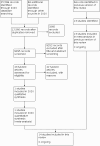
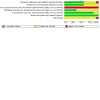
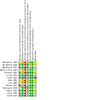
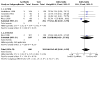
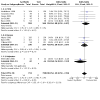
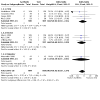
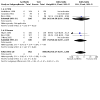
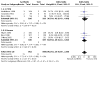
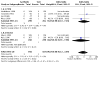
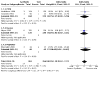
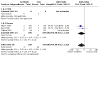

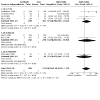
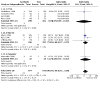
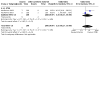
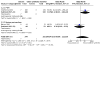
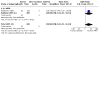

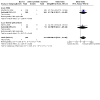
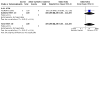
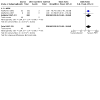
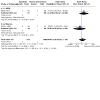
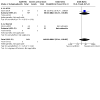
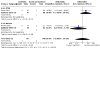
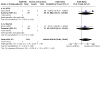

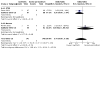
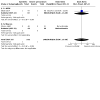

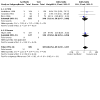
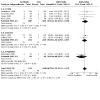
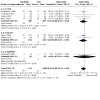
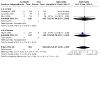
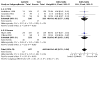
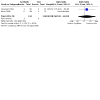
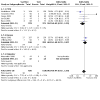

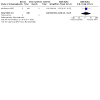
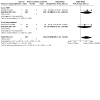
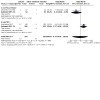
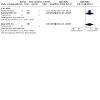
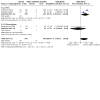
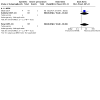
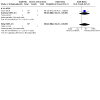
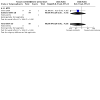
Update of
-
Patches of different types for carotid patch angioplasty.Cochrane Database Syst Rev. 2010 Mar 17;2010(3):CD000071. doi: 10.1002/14651858.CD000071.pub3. Cochrane Database Syst Rev. 2010. Update in: Cochrane Database Syst Rev. 2021 Feb 18;2:CD000071. doi: 10.1002/14651858.CD000071.pub4. PMID: 20238308 Free PMC article. Updated.
Similar articles
-
Patches of different types for carotid patch angioplasty.Cochrane Database Syst Rev. 2010 Mar 17;2010(3):CD000071. doi: 10.1002/14651858.CD000071.pub3. Cochrane Database Syst Rev. 2010. Update in: Cochrane Database Syst Rev. 2021 Feb 18;2:CD000071. doi: 10.1002/14651858.CD000071.pub4. PMID: 20238308 Free PMC article. Updated.
-
Patches of different types for carotid patch angioplasty.Cochrane Database Syst Rev. 2004;(2):CD000071. doi: 10.1002/14651858.CD000071.pub2. Cochrane Database Syst Rev. 2004. Update in: Cochrane Database Syst Rev. 2010 Mar 17;(3):CD000071. doi: 10.1002/14651858.CD000071.pub3. PMID: 15106141 Updated.
-
Patch angioplasty versus primary closure for carotid endarterectomy.Cochrane Database Syst Rev. 2004;(2):CD000160. doi: 10.1002/14651858.CD000160.pub2. Cochrane Database Syst Rev. 2004. Update in: Cochrane Database Syst Rev. 2009 Oct 07;(4):CD000160. doi: 10.1002/14651858.CD000160.pub3. PMID: 15106145 Updated.
-
Patch angioplasty versus primary closure for carotid endarterectomy.Cochrane Database Syst Rev. 2009 Oct 7;2009(4):CD000160. doi: 10.1002/14651858.CD000160.pub3. Cochrane Database Syst Rev. 2009. Update in: Cochrane Database Syst Rev. 2022 Aug 3;8:CD000160. doi: 10.1002/14651858.CD000160.pub4. PMID: 19821267 Free PMC article. Updated.
-
A meta-analysis of randomized trials comparing bovine pericardium and other patch materials for carotid endarterectomy.J Vasc Surg. 2018 Oct;68(4):1241-1256.e1. doi: 10.1016/j.jvs.2018.07.023. J Vasc Surg. 2018. PMID: 30244928 Review.
Cited by
-
Mitomycin-Treated Endothelial and Smooth Muscle Cells Suitable for Safe Tissue Engineering Approaches.Front Bioeng Biotechnol. 2022 Mar 11;10:772981. doi: 10.3389/fbioe.2022.772981. eCollection 2022. Front Bioeng Biotechnol. 2022. PMID: 35360387 Free PMC article.
-
Idiopathic Left Ventricular Pseudoaneurysm: A Case Report Highlighting Its Rare Occurrence and Management.Cureus. 2025 Feb 6;17(2):e78615. doi: 10.7759/cureus.78615. eCollection 2025 Feb. Cureus. 2025. PMID: 40062187 Free PMC article.
-
Carotid Endarterectomy.Adv Tech Stand Neurosurg. 2022;44:187-207. doi: 10.1007/978-3-030-87649-4_10. Adv Tech Stand Neurosurg. 2022. PMID: 35107680
-
Comparative on the effectiveness and safety of different carotid endarterectomy techniques: a single-center Retrospective Study.J Cardiothorac Surg. 2024 Jun 20;19(1):338. doi: 10.1186/s13019-024-02838-0. J Cardiothorac Surg. 2024. PMID: 38902703 Free PMC article.
References
References to studies included in this review
AbuRahma 1996 {published data only}
-
- AbuRahma AF, Khan JH, Robinson PA, Saiedy S, Short YS, Boland JP, et al. Prospective randomized trial of carotid endarterectomy with primary closure and patch angioplasty with saphenous vein, jugular vein, and polytetrafluoroethylene: perioperative (30 day) results. Journal of Vascular Surgery 1996;24:998-1007. - PubMed
-
- AbuRahma AF, Robinson PA, Saiedy S, Kahn JH, Boland JP. Prospective randomized trial of carotid endarterectomy with primary closure and patch angioplasty with saphenous vein, jugular vein, and polytetrafluoroethylene: long-term follow-up. Journal of Vascular Surgery 1998;27(2):222-32. - PubMed
AbuRahma 2002 {published data only}
-
- AbuRahma A, Hannay S, Khan JH, Robinson PA, Hudson JK, Davis EA. Prospective randomised study of carotid endarterectomy with polytetrafluoroethylene versus collagen-impregnated Dacron (Hemashield) patching: perioperative (30-day) results. Journal of Vascular Surgery 2002;35:125-30. - PubMed
AbuRahma 2007 {published data only}
-
- AbuRahma AF, Stone P, Deem S, Dean LS, Keiffer T, Deem E. Proposed duplex velocity criteria for carotid restenosis following carotid endarterectomy with patch closure. Journal of Vascular Surgery 2009;50:286-91. - PubMed
-
- Aburahma AF, Stone PA, Elmore M, Flaherty SK, Armistead L, AbuRahma Z. Prospective randomized trial of ACUSEAL (Gore-Tex) vs Finesse (Hemashield) patching during carotid endarterectomy: long-term outcome. Journal of Vascular Surgery 2008;48(1):99-103. - PubMed
-
- AbuRahma AF, Stone PA, Flaherty SK, AbuRahma Z. Prospective randomized trial of ACUSEAL (Gore-Tex) versus Hemashield-Finesse patching during carotid endarterectomy: early results. Journal of Vascular Surgery 2007;45:881-4. - PubMed
Albrecht‐Fruh 1998 {published data only}
-
- Albrecht-Fruh G, Ktenidis K, Horsch S. Dacron versus polyurethane (PUR) patch angioplasty in carotid surgery. In: Horsch S, Ktenidis K, editors(s). Perioperative Monitoring in Carotid Surgery. Darmstadt Steinkopff Springer, 1998:153-7.
Gonzalez 1994 {published and unpublished data}
-
- Gonzalez-Fajardo JA, Perez JL, Mateo AM. Saphenous vein patch versus polytetrafluoroethylene patch after carotid endarterectomy. Journal of Cardiovascular Surgery 1994;35:523-8. - PubMed
-
- Perez-Burckhardt JL, Gonzalez-Fajardo JA, Mateo AH. Saphenous vein patch versus polytetrafluoroethylene patch after carotid endarterectomy. International Angiology 1995;14 Suppl 1:346. - PubMed
Grego 2003 {published data only}
-
- Grego F, Antonello M, Lepidi S, Bonvini S, Deriu GP. Prospective, randomized study of external jugular vein patch versus polytetrafluoroethylene patch during carotid endarterectomy: perioperative and long-term results. Journal of Vascular Surgery 2003;38:1232-40. - PubMed
Hayes 2001 {published data only}
-
- Hayes PD, Allroggen H, Steel S, Thompson MM, London NJ, Bell PR, et al. Randomized trial of vein versus Dacron patching during carotid endarterectomy: influence of patch type on postoperative embolization. Journal of Vascular Surgery 2001;33(5):994-1000. - PubMed
-
- Naylor R, Hayes PD, Payne DA, Allroggen H, Steel S, Thompson MM, et al. Randomized trial of vein versus Dacron patching during carotid endarterectomy: long-term results. Journal of Vascular Surgery 2004;39(5):985-93. - PubMed
Katz 1996 {published data only}
-
- Katz SG, Kohl RD. Does the choice of material influence early morbidity in patients undergoing carotid patch angioplasty? Surgery 1996;119:297-301. - PubMed
Lord 1989 {published and unpublished data}
-
- Lord RSA, Raj TB, Stary DL, Nash PA, Graham AR, Goh KH. Comparison of saphenous vein patch, polytetrafluoroethylene patch, and direct arteriotomy closure after carotid endarterectomy. Part I: Perioperative results. Journal of Vascular Surgery 1989;9:521-9. - PubMed
Marien 2002 {published data only}
-
- Marien BJ, Raffetto JD, Seidman CS, LaMorte WW, Menzoian JO. Bovine pericardium vs Dacron for patch angioplasty after carotid endarterectomy. A prospective randomized study. Archives of Surgery 2002;137:785-8. - PubMed
Meerwaldt 2008 {published data only}
-
- Meerwaldt R, Lansink KW, Blomme AM, Fritschy WM. Prospective randomized study of carotid endarterectomy with Fluoropassiv thin wall carotid patch versus venous patch. European Journal of Vascular and Endovascular Surgery 2008;36:45-52. - PubMed
O'Hara 2002 {published data only}
-
- O'Hara PJ, Hertzer NR, Mascha EJ, Krajewski LP, Clair DG, Ouriel K. A prospective, randomized study of saphenous vein patching versus synthetic patching during carotid endarterectomy. Journal of Vascular Surgery 2002;35(2):324-30. - PubMed
Ricco 1996 {published and unpublished data}
-
- Ricco JB, Demarque C, Bouin-Pineau MH, Camiade C. Vein patch versus PTFE patch for carotid endarterectomy. A randomized trial in a selected group of patients. Manuscript submitted to the European Journal of Vascular Surgery 1996.
-
- Ricco JB, Gauthier JB, Bodin-Pineau MH. Enlargement patch after carotid endarterectomy. Polytetrafluoroethylene (PTFE) or saphenous patch? Results of a randomized study after 3 years (abstract). In: Paper presented at The French Language Society of Vascular Surgery, Annual Congress of Reims. 19-20 June 1992.
References to studies excluded from this review
Carney 1987 {published data only}
-
- Carney WI, Lilly MP. Intraoperative evaluation of PTFE, Dacron and autologous vein as carotid patch materials. Annals of Vascular Surgery 1987;1:583-6. - PubMed
Chyatte 1996 {published data only (unpublished sought but not used)}
-
- Chyatte D. Perioperative microemboli during carotid endarterectomy: differences between synthetic and saphenous vein patches. Cerebrovascular Diseases 1996;6 Suppl 2:2 (Abstract 17).
Ruckert 2000 {published data only}
-
- Ruckert RI, Obitz JG, Schwenk W, Walter M. Prospective randomized comparison of different patch materials in carotid surgery. Acta Chirurgica Austriaca 2000;32:19.
Additional references
ACAS 1995
-
- Executive Committee for the Asymptomatic Carotid Atherosclerosis Study. Endarterectomy for asymptomatic carotid artery stenosis. JAMA 1995;273(18):1421-8. - PubMed
ACST‐1 2010
APT 1994
Bamford 1988
-
- Bamford JM, Sandercock PAG, Dennis MS, Warlow C, Jones L, McPherson K, et al. A prospective study of acute cerebro-vascular disease in the community. The Oxfordshire Community Stroke Project 1981-1986. (I) Methodology, demography and incident cases of first ever stroke. Journal of Neurology, Neurosurgery, and Psychiatry 1988;51:1373-80. - PMC - PubMed
Counsell 1998
Deeks 2001
-
- Deeks JJ, Altman DG, Bradburn MJ. Statistical methods for examining heterogeneity and combining results from several studies in meta-analysis. In: Egger M, Davey Smith G, Altman DG, editors(s). Systematic Reviews in Health Care. 2nd edition. London, UK: BMJ Books, 2001:200.
Deeks 2011
-
- Deeks JJ, Higgins JPT, Altman DG. Chapter 9: Analysing data and undertaking meta-analyses. In: Higgins JP, Green S, editors(s). Cochrane Handbook for Systematic Reviews of Interventions Version 5.1.0 (updated March 2011). The Cochrane Collaboration, 2011:www.handbook.cochrane.org.
ECST 1991
-
- European Carotid Surgery Trialists' Collaborative Group. MRC European Carotid Surgery Trial: interim results for symptomatic patients with severe (70-99%) or with mild (0-29%) carotid stenosis. Lancet 1991;337:1235-43. - PubMed
ECST 1998
-
- European Carotid Surgery Trialists Collaborative Group. Randomised trial of endarterectomy for recently symptomatic carotid stenosis: final results of the MRC Eurpean Carotid Surgery Trial (ECST). Lancet 1998;351:1379-87. - PubMed
Fode 1986
-
- Fode NC, Sundt Jr TM, Robertson JT, Peerless SJ, Shields CB. Multicenter retrospective review of results and complications of carotid endarterectomy in 1981. Stroke 1986;17:370-6. - PubMed
GBD 2019
-
- The Global Burden of Diseases, Injuries, and Risk Factors Study 2016 Stroke Collaborators. Global, regional, and national burden of stroke, 1990-2016: a systematic analysis for the Global Burden of Disease Study 2016. Lancet Neurology 2019;18(5):439-58. [DOI: 10.1016/S1474-4422(19)30034-1] - DOI - PMC - PubMed
GRADEpro 2015 [Computer program]
-
- GRADEpro GDT. GRADE Working Group. Hamilton (ON): McMaster University, 2015 (accessed 18 January 2017).
Higgins 2003
Higgins 2011
Higgins 2016
-
- Higgins JPT, Lasserson T, Chandler J, Tovey D, Churchill R. Standards for the conduct of new Cochrane Intervention Reviews. In: Higgins JPT, Lasserson T, Chandler J, Tovey D, Churchill R, editors(s). Methodological Expectations of Cochrane Intervention Reviews. London: Cochrane, 2016:Available from http://methods.cochrane.org/resources.
Higgins 2020
-
- Higgins JPT, Savović J, Page MJ, Elbers RG, Sterne JAC. Chapter 8: Assessing risk of bias in a randomized trial. In: Higgins JPT, Thomas J, Chandler J, Cumpston M, Li T, Page MJ, Welch VA, editors(s). Cochrane Handbook for Systematic Reviews of Interventions version 6.1 (updated Sepetember 2020). Cochrane, 2020:Available from www.training.cochrane.org/handbook/current/chapter-08.
Kim 2001
-
- Kim GE, Kwon TW, Cho YP, Kim DK, Kim HS. Carotid endarterectomy with bovine patch angioplasty: a preliminary report. Cardiovascular Surgery 2001;9(5):458-62. - PubMed
Mckenzie 2020
-
- McKenzie JE, Brennan SE, Ryan RE, Thomson HJ, Johnston RV, Thomas J. Chapter 3: Defining the criteria for including studies and how they will be grouped for the synthesis. In: Higgins JPT, Thomas J, Chandler J, Cumpston M, Li T, Page MJ, Welch VA, editors(s). Cochrane Handbook for Systematic Reviews of Interventions version 6.1 (updated September 2020). Cochrane, 2020. Available from www.training.cochrane.org/handbook.
Murie 1994
-
- Murie JA, John TG, Morris PJ. Carotid endarterectomy in Great Britain and Ireland: practice between 1984 and 1992. British Journal of Surgery 1994;81:827-31. - PubMed
NASCET 1991
-
- North American Symptomatic Carotid Endarterectomy Trial Collaborators. Beneficial effect of carotid endarterectomy in symptomatic patients with high-grade carotid stenosis. New England Journal of Medicine 1991;325:445-53. - PubMed
NASCET 1998
-
- North American Symptomatic Carotid Endarterectomy Trial Collaborators. Beneficial effect of carotid endarterectomy in symptomatic patients with symptomatic moderate or severe stenosis. New England Journal of Medicine 1998;339:1415-25. - PubMed
Nichols 2012
-
- Nichols M, Townsend N, Luengo-Fernandez R, Leal J, Scarborough P, Rayner M. European cardiovascular disease statistics 2012. Sophia Antipolis: European Heart Network, Brussels, European Society of Cardiology.
Ren 2013
RevMan 2020 [Computer program]
-
- Review Manager (RevMan). Version 5.4.1. The Cochrane Collaboration, 2020.
Schmitt 1986
-
- Schmitt DD, Bandyk DF, Pequet AJ, Towne JB. Bacterial adherence to vascular prostheses. A determinant of graft infectivity. Journal of Vascular Surgery 1986;3:732-40. - PubMed
Schulz 1995
-
- Schulz KF, Chalmers I, Hayes RJ, Altman DG. Empirical evidence of bias. Dimensions of methodological quality associated with estimates of treatment effects in controlled trials. JAMA 1995;273:408-12. - PubMed
Schünemann 2011
-
- Schünemann HJ, Oxman AD, Vist GE, Higgins JPT, Deeks JJ, Glasziou P. Chapter 12: Interpreting results and drawing conclusions. In: Higgins JPT, Green S, editors(s). Cochrane Handbook for Systematic Reviews of Interventions Version 5.1.0 (updated March 2011). The Cochrane Collaboration, 2011:Available from www.handbook.cochrane.org.
SPSS 2019 [Computer program] [Computer program]
-
- SPSS Base 26.0 for Windows. SPSS Inc. Chicago (IL): SPSS Inc, 2019.
Sterne 2011
-
- Sterne JAC, Egger M, Moher D. Chapter 10: Addressing reporting biases. In: Higgins JPT, Green S, editors(s). Cochrane Handbook for Systematic Reviews of Interventions Version 5.1.0 (updated March 2011). The Cochrane Collaboration, 2011:Available from www.handbook.cochrane.or.
Texakalidis 2018
-
- Texakalidis P, Giannopoulos S, Charisis N, Giannopoulos S, Karasavvidis T, Koullias G, et al. A meta-analysis of randomized trials comparing bovine pericardium and other patch materials for carotid endarterectomy. Journal of Vascular Surgery 2018;68:1241-56. - PubMed
Truelsen 2006
-
- Truelsen B, Piechowski-Jozwiak T, Bonita R, Mathersa C, Bogousslavsky J, Boysen G. Stroke incidence and prevalence in Europe. European Neurology 2006;13:581-98. - PubMed
References to other published versions of this review
Bond 2004
Counsell 2000
Publication types
MeSH terms
Substances
LinkOut - more resources
Full Text Sources
Other Literature Sources
Medical

